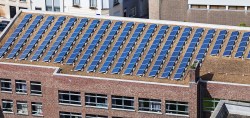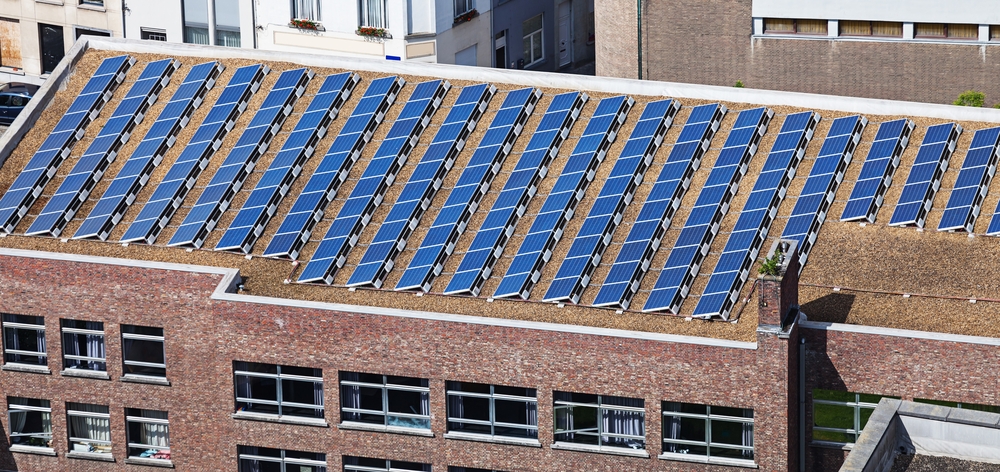
Photo by Shutterstock.
Back in April, President Obama signed the Jumpstart Our Business Startups Act (the JOBS Act), and one of the most heralded elements was so-called crowdfunding. The law sought to solve a major problem: It’s hard to finance small-scale business ventures. Wall Street only cares about multi-million-dollar plays, and securities regulations make small-dollar projects rather difficult (and costly) to jointly fund.
The act could have big implications for community-based renewable energy projects.
Right now, there are two kinds of community-based renewable energy projects, the charitable or the persistent. Solar Mosaic, for example, was founded and funded on the concept that many environmentally motivated people would help finance local solar projects with zero-percent-interest loans. They succeeded in building several projects, but the model is constrained by the limited universe of people who have money at hand and are willing to let it be used for no reward.
The other kind of renewable energy project allows participants to get some kind of financial reward through sheer persistence, overcoming enormous regulatory and legal barriers to success (some of which I covered in this 2007 report). It means finding a complex legal structure to capture federal tax credits despite needing investors with “passive tax liability” or sacrificing federal incentives for simple ownership structures like cooperatives or municipal utilities. It means having “accredited” (rich) investors or only soliciting investors through personal relationships. This community wind project is an illustration, as are several solar projects in this report.
The JOBS Act may finally allow thousands of regular folks to make a modest return (5 to 10 percent) by investing in local renewable energy projects. The act allows for crowdfunding under the following circumstances:
- The project raises less than $1 million.
- The project owner discloses certain financial information, such as income tax returns, financial statements reviewed by an accountant, or fully audited financial statements.
The $1 million limit is the approximate cost of a 200-kilowatt solar project, so crowdfunding could mean a significant boost for community-based solar arrays, especially in states with virtual net metering (allowing those potential investors to share the electricity output).
Crowdfunding won’t mean much for wind projects, where a single turbine costs well over the dollar limit, but the JOBS Act also opened the door for more community-based wind with changes to the Securities and Exchange Commission (SEC) exemption Regulation A. (For more on this, read my 2007 report on wind energy ownership and then this article on the changes to Regulation A).
It’s not all roses and unicorns. There are still several potential hangups for the crowdfunding model:
- The SEC still has to implement the new regulation (likely in early 2013).
- Websites that host crowdfunding opportunities (e.g. Kickstarter) will have to comply with new regulations.
- The information disclosure requirements for potential project owners mentioned in the act are not insignificant.
- Up-front costs such as legal fees, even for a modest crowdfunding venture, could still be $10,000 to $15,000.
- It’s not clear how crowdfunding solves the problem of capturing federal tax incentives.
I’ll be interested to see how it develops.



